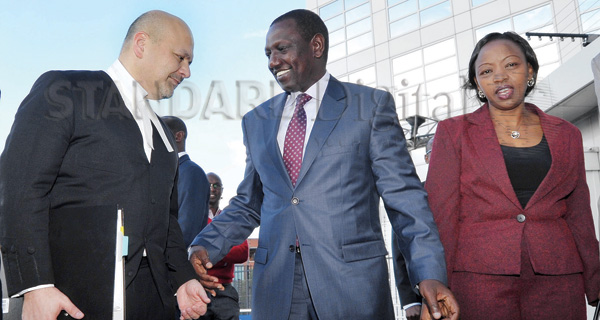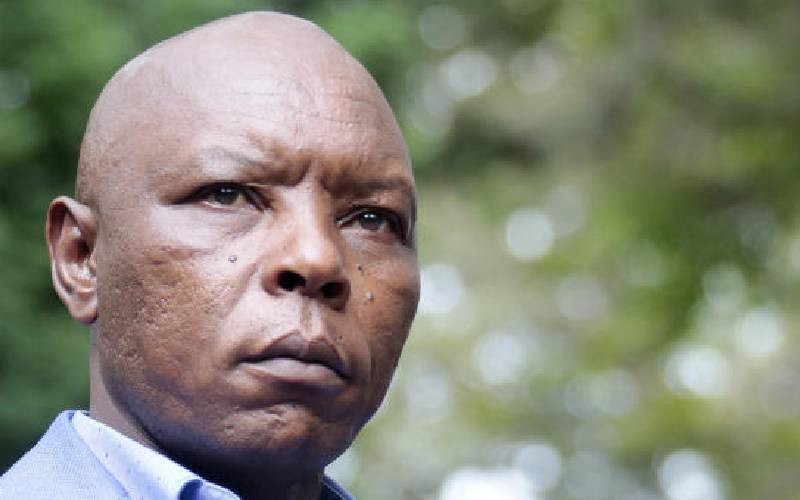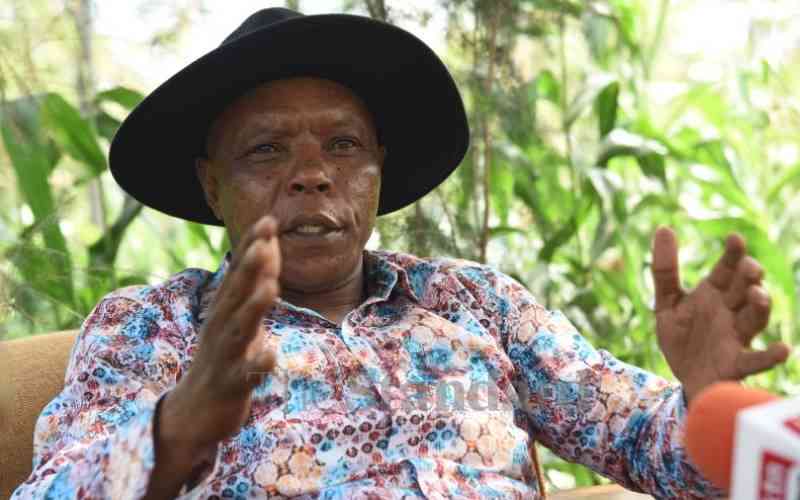 |
|
Deputy President William Ruto his lawyer and wife The Hague [PHOTO: PIUS CHERUYOT] |
By FELIX OLICK
The Hague: Deputy President William Ruto’s lawyer on Thursday dragged former Prime Minister Raila Odinga’s name into the ongoing trial at the International Criminal Court. Lawyer Karim Khan sought to establish a connection between Raila, the ODM leader, and the outlawed Mungiki sect, while discrediting the prosecution witness’ knowledge of affairs of the Orange party.
Khan dwelt on Raila’s political relationship with the outlawed Mungiki sect during cross examination of the second prosecution witness, identified as witness Number 326.
Khan pressed the witness to explain the ODM leader’s relationship with the outlawed sect, and its former leader Maina Njenga, during the 2005 referendum and the 2007 presidential polls.
“Are you aware that Raila Odinga gave Maina Njenga books, including 48 Laws of Power?” Khan asked the witness yesterday on Day Two of the cross-examination. The witness said he was not aware.
Khan also inquired whether the witness was aware that Raila maintained contact with Njenga between 2007 and 2008 when he was behind bars and later “worked tirelessly” to win the Mungiki vote through him.
He also asked the witness whether he was aware Mungiki had voted against the 2005 referendum on the constitution and later rallied the group’s support for ODM in the 2007 presidential polls.
“Are you aware that in 2007, Maina Njenga was supporting ODM and Raila Odinga?” Khan asked the witness as Ruto followed the proceedings keenly.
DEATH SQUADS
In the ICC Case Two, the prosecution accuses President Uhuru Kenyatta of facilitating Mungiki death squads to attack perceived ODM supporters in Naivasha and Nakuru to keep then President Kibaki in power.
The ICC cases arose from the violence that swept through the country following the disputed 2007 presidential election in which the incumbent, Kibaki, and Raila, his main rival, claimed victory.
Yesterday, Khan showed the witness pictures of Raila apparently being crowned a Kikuyu elder, with Maina Njenga conspicuous during the ceremony.
But the witness, whose face has been concealed and voice distorted to protect his identity, maintained that he was not familiar with the Kikuyu culture and could not identify the ceremony.
He also said that he was aware that Raila campaigned vigorously in the Mount Kenya region but could not confirm to the judges whether the former PM courted Mungiki support.
After the witness rejected the assertions, Khan played a clip of a KTN interview with the former Mungiki boss where he said he backed Raila for the presidency.
Stay informed. Subscribe to our newsletter
In the interview, Njenga said: “My problems started during the referendum. Myself and the rest of the Central Kenya youth, we supported ‘No’ the same way we did in the General Election. Personally, I wanted Raila to be the President of Kenya.”
Yesterday, the Ruto defence team sought to challenge the witness’ testimony about his knowledge of the ODM party. Charging that he had insufficient knowledge of ODM, Khan claimed that the witness had lied when he told the prosecution that ODM had five offices in Nairobi.
The witness had counted Orange House, Pentagon House and Raila Odinga Centre (ROC).
But Khan insisted that there was also Rainbow House in Nairobi’s Lavington Estate used by ODM’s strategic team, as well as Titan House.
NERVE CENTRE
He also pointed out that there was 49 Communication House, which he described as “the nerve centre of the ODM presidential campaign” during the 2007 polls, contrary to what the witness had said.
The names of other ODM luminaries were also dragged into the case as Khan sought to discredit the testimony of the witness.
According to Khan, the witness had alleged that ODM Secretary-General Anyang’ Nyong’o and his family had opened a family shop at Orange House.
But the witness clarified that what was at Orange House was just a display of Nyong’o shops elsewhere, outside Orange House.
According to the witness testimony, ODM Chairman Henry Kosgey had allegedly brought his daughter, named Judy Kosgey, to work at Orange House as a cashier and only left when some money was lost.
However, Khan maintained that the witness had lied because Kosgey has no daughter called Judy and that the said Judy who worked at Orange House was the director of operations and not a treasurer as alleged.
But the witness stood his ground, stating: “Judy used to collect money before an accountant was hired.”
According to Khan, Raila’s former Principal Secretary Caroli Omondi was not part of the legal team as alleged by the witness but co-ordinated presidential agents for Raila.
Ruto’s lead lawyer also maintained that former Permanent Secretary Mohamed Isahakia was not based at Pentagon House as claimed by the witness but worked at Titan House as Raila’s campaign manager.
“You told the prosecution that Lumumba Owidi was working with Idris in crowd control. Is that true?” Khan asked. The witness answered in the affirmative.
“Are you not aware that Lumumba Owidi was in fact Raila’s personal bodyguard for many years?” Khan challenged.
Khan also told the court that Raila’s daughter is called Rosemary Odinga and not Grace Akeyo Odinga as he had claimed.
Other areas that the Ruto defence team targeted to discredit the witness testimony are the names of ODM co-ordinators that he had given to the judges.
Khan disputed the names of nearly all the co-ordinators, but the witness stuck to his list.
 The Standard Group Plc is a
multi-media organization with investments in media platforms spanning newspaper
print operations, television, radio broadcasting, digital and online services. The
Standard Group is recognized as a leading multi-media house in Kenya with a key
influence in matters of national and international interest.
The Standard Group Plc is a
multi-media organization with investments in media platforms spanning newspaper
print operations, television, radio broadcasting, digital and online services. The
Standard Group is recognized as a leading multi-media house in Kenya with a key
influence in matters of national and international interest.
 The Standard Group Plc is a
multi-media organization with investments in media platforms spanning newspaper
print operations, television, radio broadcasting, digital and online services. The
Standard Group is recognized as a leading multi-media house in Kenya with a key
influence in matters of national and international interest.
The Standard Group Plc is a
multi-media organization with investments in media platforms spanning newspaper
print operations, television, radio broadcasting, digital and online services. The
Standard Group is recognized as a leading multi-media house in Kenya with a key
influence in matters of national and international interest.









